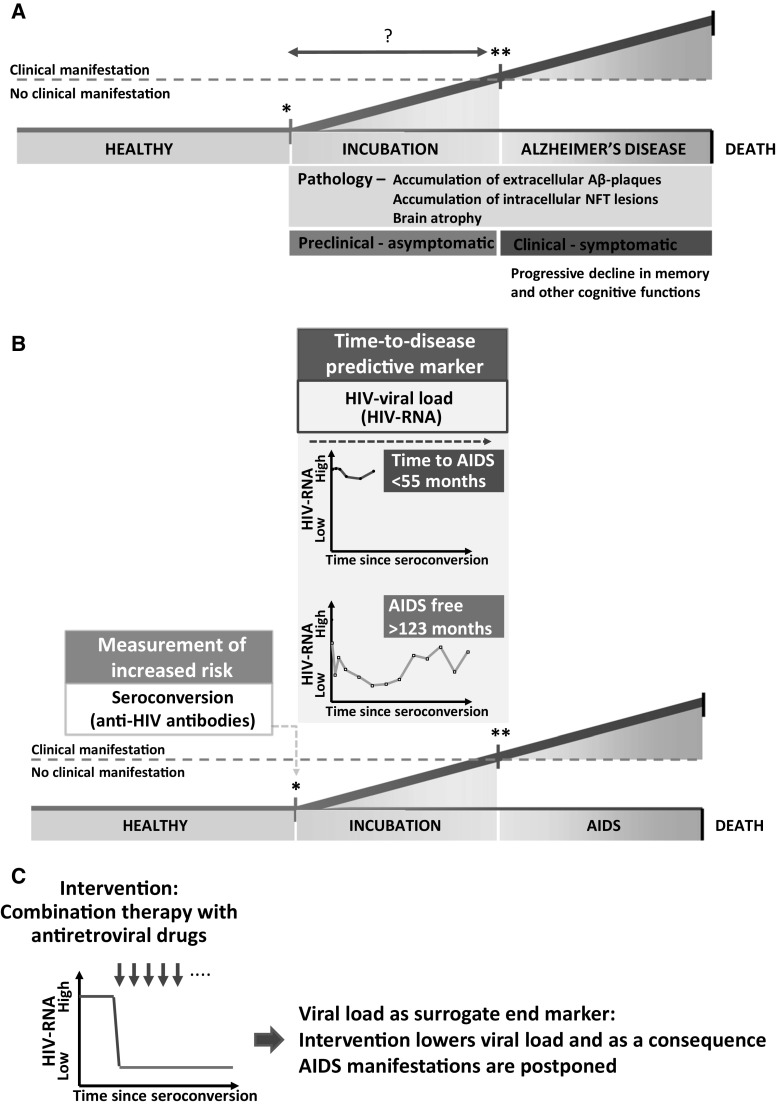Fig. 1.
a Schematic illustration of the development of Alzheimer’s disease. A ‘healthy’ individual, somewhere in time starts to incubate Alzheimer’s disease, indicated with an asterisk. During this incubation time or preclinical asymptomatic phase of the disease, underlying pathology is already ongoing. In the case of AD, this might be 17 years [34]. The initiating event or situation that induces the pathology underlying Alzheimer’s disease (the accumulation of p-tau in the form of neurofibrillary tangles and of amyloid β plaques) is currently not known. When the pathology has increased enough within the incubation time of the disease, clinical symptoms appear, and the patient will be clinically diagnosed as having Alzheimer’s disease. Post-mortem neuropathology will confirm the clinical diagnosis. b Diagrams illustrating the use of risk markers, time-to-disease markers and surrogate endpoint markers in the context of preventive interventions against HIV. In the preclinical phase of disease, ‘healthy’ asymptomatic individuals are incubating disease. This incubation time can be short or long. Key for the timely initiation of a preventive intervention is the ability to mark the start (i.e. increased risk) and length (i.e. time to disease) of this incubation time. In the case of HIV, the marker of increased risk is a digital marker, i.e. the presence or absence of anti-HIV antibody positivity. The viral load is a time-to-disease predictive marker. An individual with high HIV viral load develops AIDS in the short term (<55 months) whereas an individual with low HIV viral load will stay AIDS free (Adapted from de Wolf et al. [38]). c To determine efficacy of an intervention in the preclinical phase of a disease, surrogate endpoint markers are necessary. In the case of AIDS, the target of the intervention (combination therapy with anti-retroviral drugs) is to lower the viral load and thereby postpone AIDS manifestation. Viral load is thus used as a surrogate endpoint. NFT Neurofibrillary tangles, Aβ amyloid β

